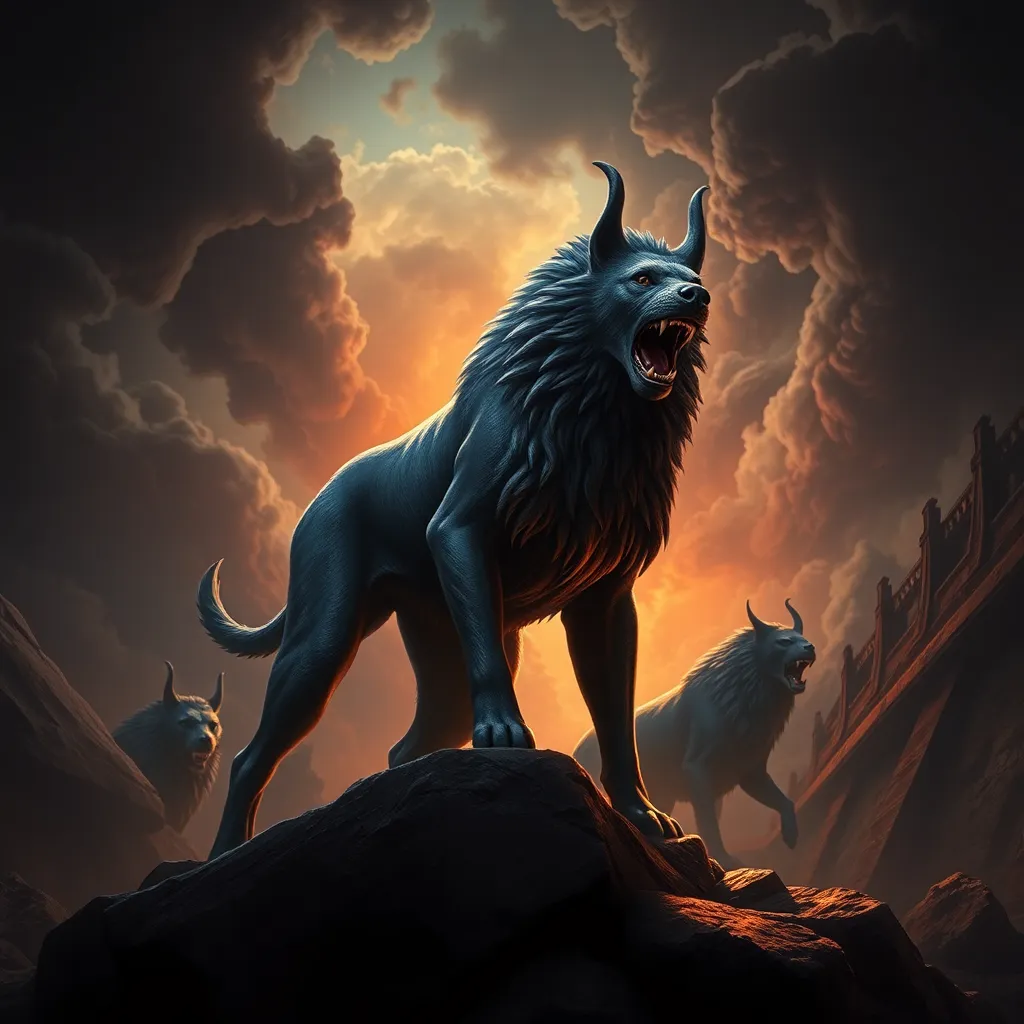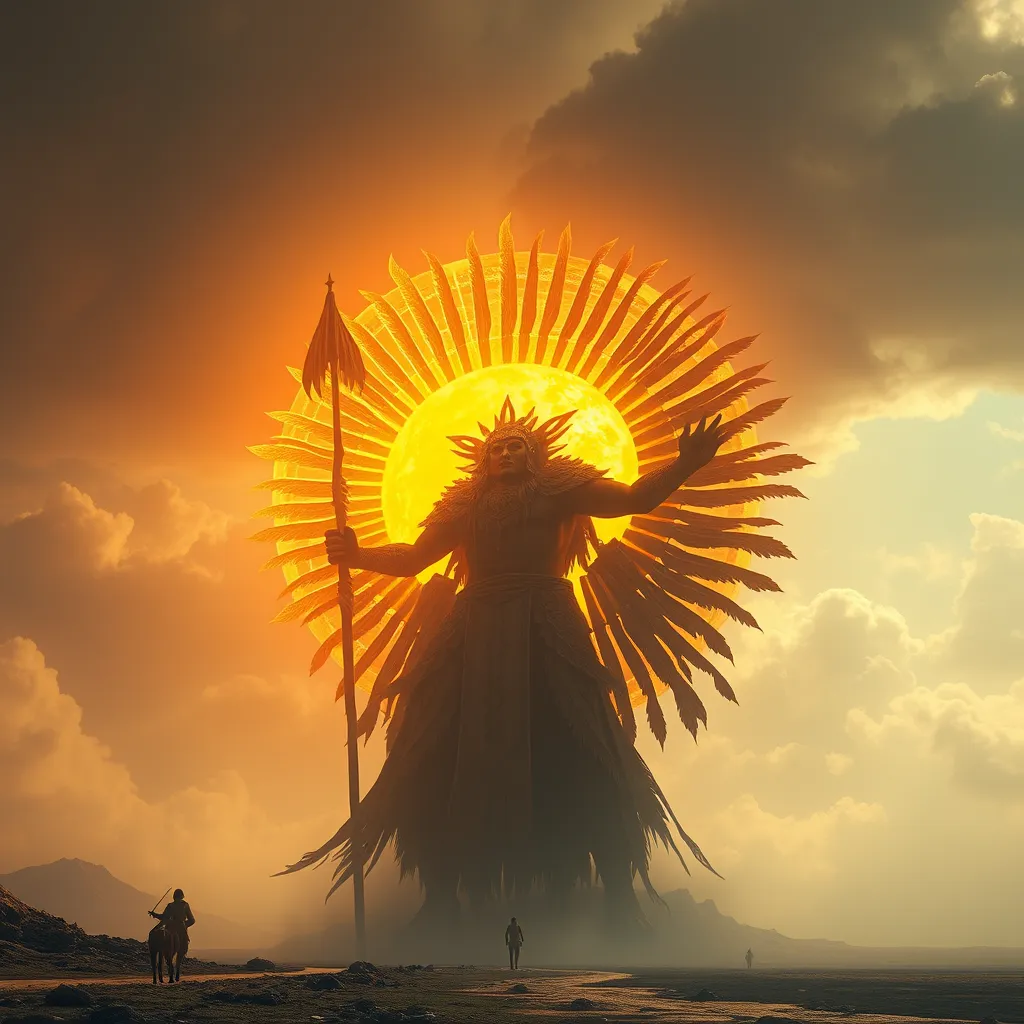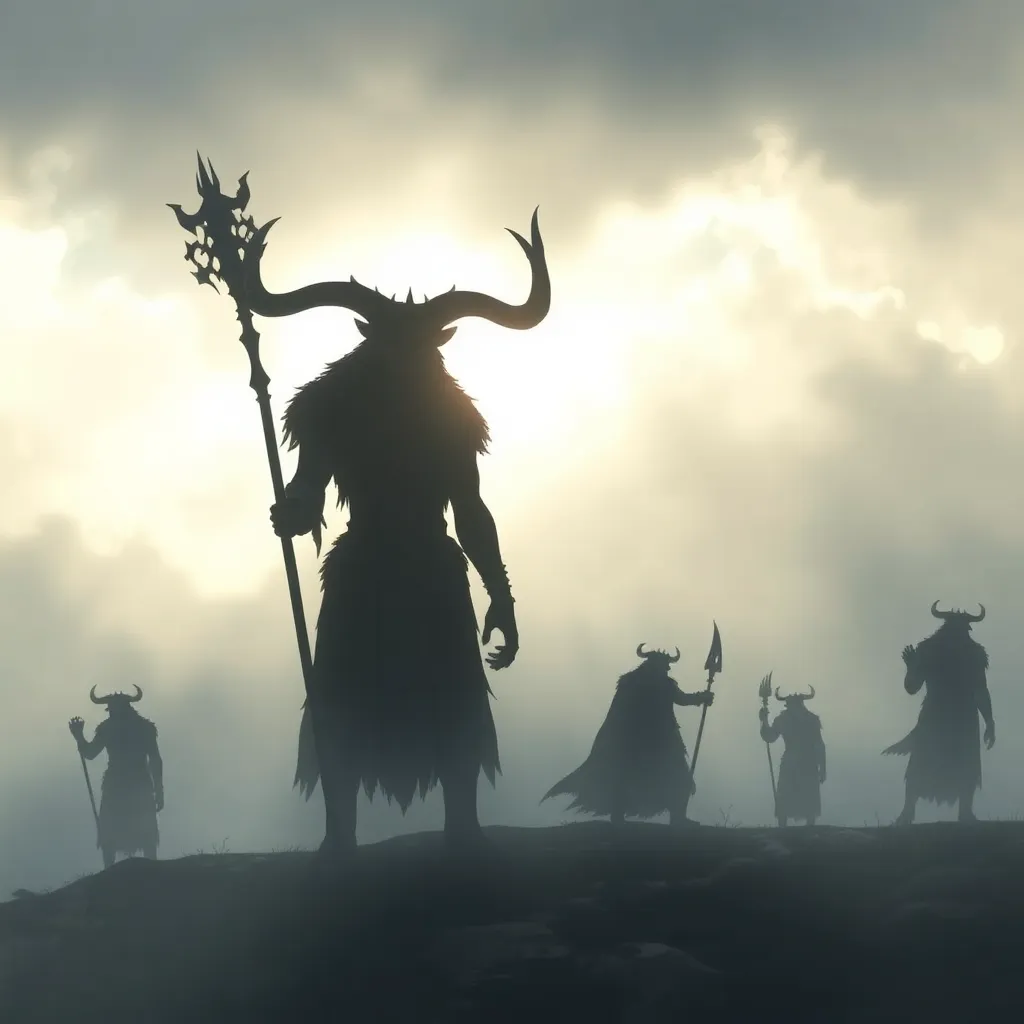The Underworld Guard in Virgil’s Aeneid: Exploring Cerberus’s Role in the Epic
I. Introduction
Virgil’s Aeneid stands as one of the cornerstones of Roman literature, a narrative that intertwines the themes of heroism, destiny, and the founding of Rome. Written in the 1st century BCE, the epic follows the journey of Aeneas, a Trojan hero, as he travels from the ruins of Troy to Italy, where he will establish a new home for his people. A significant element of this epic is the Underworld, a place that represents both the end of life and a realm of transformation.
This article aims to explore the role and significance of Cerberus, the three-headed dog who guards the gates of the Underworld, within the context of the Aeneid. Cerberus serves not only as a formidable guardian but also as a symbol of various themes prevalent throughout the epic.
II. Cerberus: The Guardian of the Underworld
A. Description and characteristics of Cerberus
Cerberus is often depicted as a monstrous creature with three heads, a long serpentine tail, and a mane of snakes. His fearsome appearance is meant to deter any souls from escaping the Underworld and to prevent the living from entering without permission. Each head symbolizes a different aspect of his role as a guardian: vigilance, ferocity, and the inevitability of death.
B. Cerberus’s origins in mythology
Cerberus has roots in ancient Greek mythology, where he is described as the offspring of the monster Echidna and Typhon, a giant serpentine creature. His role as the guardian of the Underworld has been consistent across various myths, making him a well-known figure in both Greek and Roman traditions.
C. Function as the gatekeeper of the Underworld
As the gatekeeper, Cerberus ensures that the dead remain in the Underworld and that the living do not disturb the souls of the departed. His presence highlights the finality of death and the importance of respecting the boundary between the living and the dead. In many ways, he embodies the notion that death is an inescapable part of life.
III. The Aeneid’s Depiction of the Underworld
A. Overview of Aeneas’s descent to the Underworld
Aeneas’s journey to the Underworld occurs in Book VI of the Aeneid. Guided by the Sibyl of Cumae, Aeneas seeks to consult the spirit of his father, Anchises. This descent is not simply a physical journey but a crucial part of Aeneas’s personal growth and development as a leader destined to found Rome.
B. Significance of the Underworld in the epic narrative
The Underworld in the Aeneid serves multiple purposes: it is a place of reflection, a realm of fate, and a representation of the consequences of one’s actions in life. It also provides Aeneas with pivotal insights into his destiny, as he learns about the future of his descendants and the glory of Rome.
C. Comparison with other depictions of the Underworld in literature
- Homer’s Odyssey: The Underworld serves as a space for heroes to converse with the dead, emphasizing themes of memory and legacy.
- Dante’s Inferno: The Underworld is portrayed as a place of punishment, reflecting moral and ethical consequences.
- Plato’s Myth of Er: The Underworld represents a cycle of reincarnation, illustrating philosophical ideas about the soul.
IV. Cerberus’s Encounter with Aeneas
A. Detailed account of Aeneas’s interaction with Cerberus
Upon Aeneas’s arrival in the Underworld, he encounters Cerberus, who initially poses a formidable threat. The Sibyl provides Aeneas with a cake made of honey and opium to pacify Cerberus. Upon consuming the cake, Cerberus falls into a deep sleep, allowing Aeneas and the Sibyl to pass safely.
B. Analysis of the significance of this encounter
This encounter is deeply symbolic; it represents Aeneas’s ability to confront and overcome fear. By soothing Cerberus, Aeneas demonstrates his resourcefulness and determination, qualities that are vital for a leader destined to face numerous challenges in his quest.
C. Cerberus’s reaction and role in Aeneas’s journey
While Cerberus is often associated with fear and intimidation, his reaction to the honey cake suggests that even the most fearsome guardians can be subdued. This reflects the theme that understanding and compassion can overcome brute force, a lesson that resonates throughout Aeneas’s journey.
V. Symbolism of Cerberus in the Aeneid
A. Cerberus as a symbol of fear and protection
Cerberus embodies both fear and protection. As a guardian, he protects the sanctity of the Underworld, but his fearsome nature also represents the anxiety surrounding death and the unknown. This duality makes him a complex figure within the narrative.
B. Interpretation of Cerberus’s multiple heads
The three heads of Cerberus can be interpreted in various ways:
- Past, Present, and Future: Symbolizing the continuum of time and the inescapability of fate.
- Life, Death, and Rebirth: Representing the cyclical nature of existence and the transition between realms.
- Multiple Perspectives: Each head may represent different aspects of human experience, such as fear, courage, and acceptance.
C. Cerberus as a representation of the boundary between life and death
Cerberus stands as a guardian at the threshold, marking the boundary between the living and the dead. His presence serves as a reminder of mortality, forcing Aeneas—and, by extension, the readers—to confront the realities of death and the importance of legacy.
VI. Thematic Implications of Cerberus’s Role
A. Exploration of themes of fate and destiny
The encounter with Cerberus highlights the themes of fate and destiny that permeate the Aeneid. Aeneas’s journey is predetermined, and his ability to navigate the Underworld underscores his role in fulfilling his destiny as a founder of Rome.
B. The duality of life and death in Aeneas’s journey
Aeneas’s descent into the Underworld and his interaction with Cerberus encapsulate the duality of life and death. This theme is vital for understanding the human experience and the inevitability of death as part of life’s journey.
C. Cerberus as a reflection of the challenges faced by heroes
Cerberus symbolizes the challenges that heroes must confront. Just as Aeneas must face Cerberus to continue his journey, so too must every hero face their own fears and obstacles on their path to greatness.
VII. Cerberus in the Context of Roman Values
A. Examination of Roman beliefs about the afterlife
Roman beliefs about the afterlife were complex, combining elements of Greek mythology with their own traditions. The Underworld was viewed as a place of judgment and reflection, where one’s actions in life would determine their fate after death.
B. Cerberus’s role in reflecting Roman attitudes towards death
Cerberus embodies the Roman attitude towards death as both a fearsome reality and a necessary transition. His role as a guardian highlights the importance of honoring the dead and the rituals surrounding burial and remembrance.
C. Impact of Cerberus’s portrayal on Roman culture and literature
The portrayal of Cerberus in the Aeneid influenced later Roman literature and art, cementing his status as a symbol of the Underworld. His representation in art and literature continued to evolve, reflecting the changing attitudes towards death and the afterlife in Roman culture.
VIII. Conclusion
Cerberus’s role in Virgil’s Aeneid is multifaceted, serving as both a guardian and a symbol of the themes of fear, destiny, and the boundary between life and death. His encounter with Aeneas is a pivotal moment in the epic, highlighting the hero’s growth and the importance of confronting one’s fears.
The Underworld itself, as depicted in the Aeneid, is a significant realm that shapes the narrative and the characters’ journeys. Through Cerberus, Virgil explores the complexities of human



